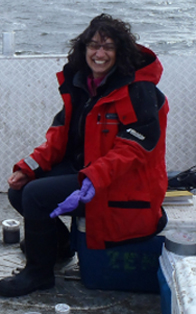Overview

The second project uses an automated water sampler on the Pinewood R. and collects samples at regular time intervals during ice free conditions. Data from this project will contribute to the larger tributary monitoring effort by Catherine Eimers at Trent University.
Location
Throughout Lake of the Woods and key points along the Rainy River.
Researcher Profiles
 Tim Pascoe, Physical Sciences Specialist with Environment and Climate Change Canada (ECCC)
Tim Pascoe, Physical Sciences Specialist with Environment and Climate Change Canada (ECCC)
I’ve worked for the Water Quality Monitoring and Surveillance division at ECCC for 11 years. My work has included both chemistry-based and biological monitoring efforts, with an emphasis on the development of the Canadian Aquatic Biomonitoring Network (CABIN). My work in the Lake of the Woods basin focuses on long-term base-line aquatic monitoring for nutrients, both in-lake as well as in selected tributaries to the Rainy River. Long-term sampling in the lake has included water chemistry, base-line benthic biological sampling, and scans for pesticides and organic contaminants. I have also been a member of the Technical Advisory Committee (part of the International Multi-Agency Working Arrangement) for 8 years, which aids in the coordination of science and monitoring work for the basin.
 Tana McDaniel, Physical Sciences Specialist with Environment and Climate Change Canada (ECCC)
Tana McDaniel, Physical Sciences Specialist with Environment and Climate Change Canada (ECCC)
I have worked for Water Quality Monitoring and Surveillance at ECCC for 9 years, previous to this I worked for the Canadian Wildlife Service (ECCC) on ecotoxicology. In past years I was the secretary to the former International Rainy River Water Pollution Board and the International Rainy Lake Board of Control where I was fortunate to work and interact with many colleagues and friends in the Lake of the Woods basin. My work on Lake of the Woods focuses on environmental monitoring of water and sediments, for nutrients, contaminants and biological impacts to the benthic community. I also liaise with local lay collectors to coordinate sampling on the Rainy and Pinewood Rivers.
Description of Study
Baseline Monitoring in Lake of the Woods and Rainy R.
The intent of this monitoring is to provide a baseline of water quality information throughout the lake and at key points in the Rainy R. against which changes can be assessed. This is required to track the effectiveness of implemented management actions and to track water quality changes resulting from climate change in the longer term. Currently, there is no agency in the basin that conducts water quality monitoring in the whole lake. We are working collaboratively with other agencies in the basin to coordinate water quality monitoring and share data. This project provides seasonal information on water quality at up to 25 stations in the lake both at surface and depth. Monitoring data is used in conjunction with efforts conducted on smaller spatial areas of the lake, by other agencies, to provide varying scales of water quality data resolution to aid in decision making. This includes the TMDL Study undertaken by MPCA and the State of Minnesota. Lake and Rainy R. water quality monitoring has been taking place for ten years and information from this monitoring suggests that:
- Long term nutrient levels appear to be declining in the Rainy River
- Suspended sediment plays a major role in loading in the Pinewood River
- Iron concentrations in the Rainy River exceed guidelines, and may play a role in nutrient cycling in Lake of the Woods
- Some metals exceed guidelines in the sediments of Lake of the Woods
Event based Monitoring in the Rainy R. Basin
The objective of this work is to provide more accurate information for nutrient loadings into the lake. Current grab based sampling is not able to consistently capture sudden fluctuations due to spring melt and precipitation events. Studies have shown that these events are often the major source of loadings to a water body. Currently, an automated sampler near the mouth of the Pinewood River is used to capture events during the ice free periods. The results will be used to adjust modeling estimates and quantify nutrient loadings from temporally bounded events. Only limited monitoring (1 full season and one partial season) using this system has been conducted to date.
Key Partners
- Lake of the Woods Water Sustainability Foundation
- Trent University
- Ontario Ministry of Environment, Conservation and Parks
- Ontario Ministry of Natural Resources and Forestry
- Minnesota Pollution Control Agency
